In October 2020, the ambitious journey to modernize and streamline patient care through EHR data migration began for the U.S. Department of Veterans Affairs. Fast forward to today, and the voyage is far from over. Why, you might ask, has a project of such critical importance stumbled along the way? This scenario isn’t unique to the VA but is reflective of the complex challenges that can arise in the healthcare technology sphere, especially with EHR data migration. It serves as a vivid reminder that without meticulous planning, robust testing, and comprehensive training, even the most well-intentioned initiatives can encounter significant hurdles.
But here’s the silver lining – every challenge presents an opportunity for learning and improvement. In this blog, we’re not just sharing cautionary tales; we’re offering a roadmap to success. From ensuring precise data handling to navigating technical and operational pitfalls, our expert advice aims to equip you with the knowledge to execute seamless EHR data migrations. After all, in the fast-evolving landscape of healthcare technology, being informed and prepared is half the battle won. Join us as we explore how to transform daunting challenges into triumphs, ensuring your EHR migration story is one of success, not caution.
Top Takeaways:
- Data migration in EMR is pivotal, acting as the backbone of healthcare technology. It revolutionizes healthcare delivery, ensuring essential patient data flows smoothly across platforms enhancing care coordination and clinical decision-making. This not only boosts clinical workflow efficiency, potentially saving lives but also rigorously adheres to regulatory frameworks like HIPAA, protecting patient data integrity and confidentiality.
- Navigating the diverse landscape of EHR data migration is crucial for the success of your healthcare app. Whether you opt for manual precision or automated efficiency, big bang comprehensiveness or the meticulousness of phased migration, each choice has its unique impacts. Cloud migrations introduce scalability and security, while database and application migrations require deep technical know-how.
- Often, a hybrid approach marries the best of all worlds, aligning with your project’s specific needs and goals. Thoughtful consideration of timelines, data complexity, system downtime, budget, and expertise ensures a strategy that not only smooths transitions but sets the stage for future healthcare innovations.
Table of Contents:
- EHR Data Migration Explained
- The Critical Importance of Data Migration
- Navigating the Landscape of EHR Data Migration Types
- Unexpected Benefits of EHR Migration
- Strategic Approaches to EHR Data Migration
- Navigating Through the Fog: Overcoming EHR Migration Challenges
- Unlocking Success: Best Practices for a Smooth EHR Data Migration
- Advanced Insights: Not-So-Obvious Factors in EHR Data Migration
- The Human Factor: Training and Support During EHR Migrations
- Mitigating Risks and Ensuring Regulatory Compliance
- How Topflight Makes the Difference in EHR Data Migration
EHR Data Migration Explained
Have you ever wondered what propels healthcare technology into the future? It’s not just innovative ideas but the seamless transition of crucial data that underpins this progress. This is where EHR data migration plays a critical role. But what does it involve, and why is it so pivotal?
- Understanding Data Migration for EHR: At its essence, it’s the process of moving patient information and other vital health records from one system to another. This isn’t just about transferring files; it’s about ensuring that every bit of data retains its integrity, remains secure, and becomes even more accessible and useful in its new home. It’s not purely data transfer.
- Key Components: Data migration involves several crucial steps – from planning and mapping out the data landscape, through the actual transfer, to validation and verification post-migration. Each step is key to ensuring that the data not only moves but also enhances the healthcare provider’s ability to deliver care.
- Why It Matters: In an era where technology continually shapes healthcare delivery, ensuring that data is not just available but also accurate and actionable is non-negotiable. Data migration for EHR isn’t just an IT task; it’s a foundational element that supports improved patient care, operational efficiency, and the drive towards a more integrated healthcare ecosystem.
In sum, mastering EHR data migration is not merely a technical challenge; it’s an essential stride towards advancing healthcare technology, ensuring that every piece of patient information can serve its highest purpose in providing care.
While exploring the intricate process of EHR Data Migration, it’s also beneficial to consider how integration plays a pivotal role. For an in-depth understanding, don’t miss our piece on Allscripts EHR integration, which complements the foundational knowledge provided here.
The Critical Importance of Data Migration
When we talk about data migration EMR (Electronic Medical Records), it’s like discussing the backbone of modern healthcare technology. Why exactly is this process so crucial for healthcare apps, and what impact does it have on clinical workflows? More importantly, how do regulatory and compliance considerations play into this complex equation?
- Game-Changer for Healthcare Apps: At its core, effective data migration can transform healthcare delivery. It ensures that patient histories, treatment records, and critical health information are seamlessly transferred and accessible across platforms, enhancing care coordination and decision-making.
- Impact on Clinical Workflows: Imagine a scenario where doctors and nurses can instantly access a patient’s complete medical history without sifting through piles of paper or disconnected systems. The efficiency of clinical workflows skyrockets, reducing errors and saving valuable time in emergency situations. It’s not just about convenience; it’s about saving lives.
- Regulatory and Compliance Considerations: Navigating the maze of healthcare regulations and compliance requirements is no small feat. Data migration EMR techniques must align with standards like HIPAA in the U.S., ensuring patient data is not only transferred accurately but also securely, maintaining privacy and confidentiality. This is where the expertise of seasoned professionals becomes indispensable.
- HIPAA compliance ensures patient data privacy during and after migration.
- Adherence to data protection laws mitigates the risk of data breaches.
- Regular audits and updates keep the system aligned with changing regulations.
Also Read: HIPAA Compliant App Development Guide
In essence, mastering data migration for EMR goes beyond technical know-how—it’s about upholding the trust patients place in healthcare providers and systems. It’s a critical component that underscores the reliability, efficiency, and legal adherence of healthcare apps, making it a foundational pillar in the digital transformation of healthcare services.
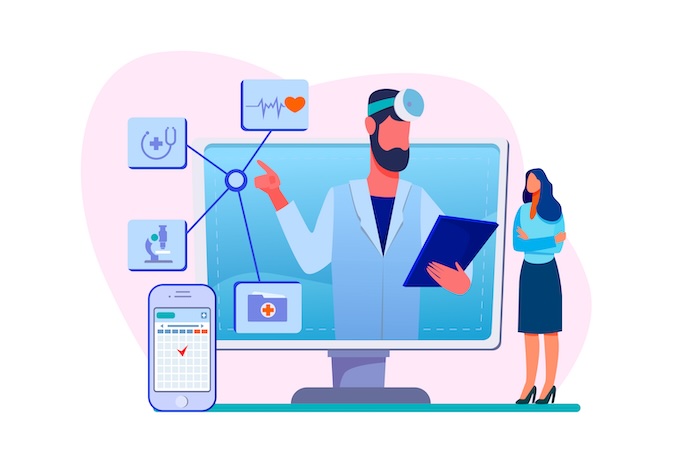
Understanding the nuances of EHR in medical billing is crucial, as it highlights the financial aspect of healthcare technology advancements. This read will enrich your comprehension of the critical importance of data migration.
Navigating the Landscape of EHR Data Migration Types
When considering an approach to EHR data migration, it’s crucial to understand the landscape is as diverse as the healthcare field itself. The method you choose can significantly impact both the short-term success and long-term viability of your healthcare application. Here, we explore the various types of EHR data migration, each with its unique advantages and challenges.
Manual vs. Automated Migration
Manual Migration: Involves hand-picking and moving data. This approach allows for high precision but can be time-consuming and prone to human error.
Automated Migration: Utilizes software tools to transfer data. While faster and more efficient, it requires meticulous pre-migration planning to ensure compatibility and integrity of the migrated data.
Big Bang vs. Trickle/Phased Migration
Big Bang Migration: All data is migrated at once. This method minimizes system downtime but requires extensive preparation and carries a higher risk if issues arise.
Trickle or Phased Migration: Data is moved in stages. This gradual approach reduces risk by identifying and resolving issues early but extends the overall timeline of migration.
Cloud Migrations
Moving EHR systems to cloud-based solutions offers scalability, flexibility, and often enhanced security. However, it demands thorough vetting of cloud providers and a clear understanding of data governance in cloud environments.
Database Migration & Application Migration
Database Migration focuses solely on moving the database containing patient records and other clinical data to a new system. This requires a deep understanding of database schemas and structures.
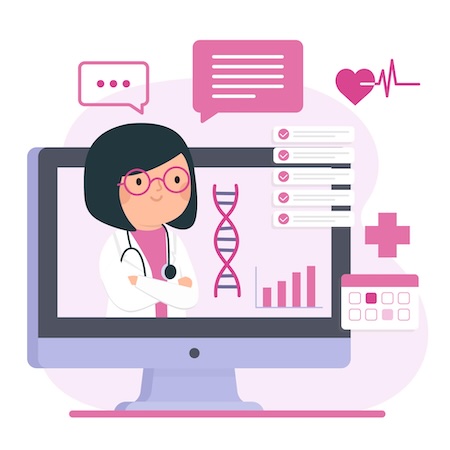
Application Migration involves transferring entire applications, including their interfaces and functionalities, to new platforms. It’s essential when upgrading to more advanced EHR systems.
Hybrid Approaches
Often, a combination of these methods best serves a project’s needs, leveraging the strengths of each approach while mitigating their weaknesses. For instance, starting with a phased migration to test the waters before committing to a full-scale cloud migration.
Choosing the best approach to EHR data migration requires a careful evaluation of your project’s specific needs, resources, and constraints. Considerations should include:
- Project Timeline: How quickly you need the migration to be completed.
- Data Volume and Complexity: The size and complexity of the data being migrated.
- System Downtime Tolerance: How much, if any, system downtime your operations can withstand.
- Budget Constraints: The financial resources available for the migration project.
- Technical Expertise: The level of technical expertise available within your team or from external partners.
By thoughtfully selecting your approach to electronic health record data migration, you can ensure not only a smoother transition but also a foundation for future advancements in patient care and operational efficiency. Remember, the ultimate goal is to enhance your healthcare delivery capabilities, making the choice of migration strategy not just a technical decision, but a strategic one.
The complexity of choosing the best approach for your project can be daunting. For those considering developing their own solutions, our guide on how to develop EHR or EMR system offers valuable insights that align well with this discussion.
Unexpected Benefits of EHR Migration
When we talk about the data migration of electronic health records (EHR), the conversation typically revolves around the logistical hurdles and the technical challenges. But have you ever stopped to think about the less obvious, yet equally impactful, advantages that come with a successful EHR migration? Here are some hidden gems that might surprise you.
Enhanced Data Accessibility
Imagine having all patient information right at your fingertips, anytime, anywhere. Post-migration, the unified and organized nature of data significantly simplifies access for healthcare providers, empowering them to make faster, more informed decisions.
Improved Patient Care Continuity
With data migration, gone are the days when patient histories were scattered across different systems. A unified EHR system ensures that every piece of patient data is seamlessly connected, enhancing the continuity of care as patients move across different service providers.
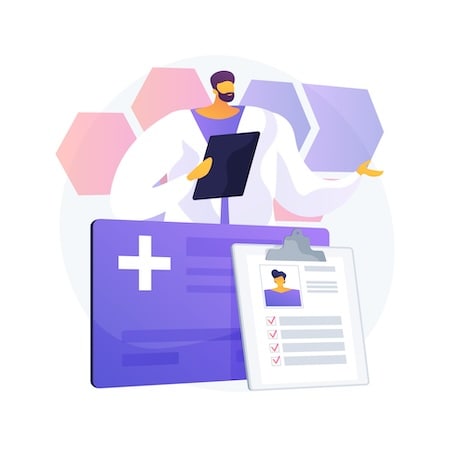
Cost Efficiency in Long-Term Operations
While the upfront cost of EHR migration might seem steep, the long-term savings are substantial. Reduced paperwork, minimized need for physical storage space, and decreased dependency on manual data entry all contribute to significant cost reductions over time.
Also Read: Healthcare App Development Cost Guide
Facilitated Compliance with Health Regulations
Staying on top of regulatory compliance is easier than you think. Migrated EHR systems are often designed with current healthcare regulations in mind, automating many compliance-related processes and ensuring that your practice stays within legal bounds without extra effort.
Data Analytics and Insights
The migration process often involves cleaning and organizing data, which, in turn, unlocks the potential for advanced analytics. This means not just operational improvements but also insights into patient care trends, outcomes, and areas for improvement that were previously obscured by disjointed data.
Boosted Patient Engagement and Satisfaction
A direct beneficiary of EHR migration is the patient experience. Access to their own health records, smoother transitions between care providers, and more personalized healthcare strategies all serve to enhance patient engagement and satisfaction.
These unexpected benefits highlight the broader impact of EHR migration beyond just the technical realm. They demonstrate how the data migration of electronic health records can fundamentally transform the way healthcare providers operate, paving the way for a future where healthcare is more accessible, efficient, and patient-centered.
Strategic Approaches to EHR Data Migration
When it comes to healthcare data migration from one EHR to another, the stakes are high, and the process is fraught with potential pitfalls. Yet, when done right, it can set the stage for enhanced healthcare delivery. How, you ask? By ensuring that valuable patient information is not just transferred, but transformed in a way that supports better clinical decisions, streamlined workflows, and ultimately, improved patient outcomes. Here, we break down the strategic approaches that make this possible.
Data Mapping and Transformation Strategies
- Identify Core Data Elements: Start by identifying which data elements are crucial for your operations. What do you absolutely need for continuity of care and compliance?
- Map Data Fields Carefully: Understand how data fields correlate between the old EHR and new systems (different EHR vendors may have different schemas for this). This is more than a simple transfer; it’s about ensuring that the data fits seamlessly into the new environment without losing its meaning or value.
- Utilize Transformation Logic: Not all medical data will move over in a like-for-like manner. Some will require transformation. For example, converting dosages from one measurement system to another or aligning data to match different clinical coding standards.
Establishing Data Governance and Quality Assurance Processes
- Define Data Quality Metrics: Before the migration kicks off, define what ‘good’ data looks like. Is it accuracy, completeness, timeliness? Likely, it’s all of the above and more.
- Implement Robust Data Cleaning: Dirty data is the Achilles heel of any EHR system. Prioritize cleaning up inaccuracies, duplicates, and outdated information before migration begins.
- Regular Quality Checks: Incorporate checkpoints throughout the migration process. This isn’t a set-it-and-forget-it operation; ongoing monitoring ensures that the data being transferred maintains its integrity and usefulness even after you go live with a new system.
Through these strategic approaches, data migration from one EHR to another becomes less of a daunting challenge and more of an opportunity to refine and improve the handling of patient data. Remember, the goal isn’t just to move data; it’s to enhance its utility and make sure it serves your patients and providers better in its new home.
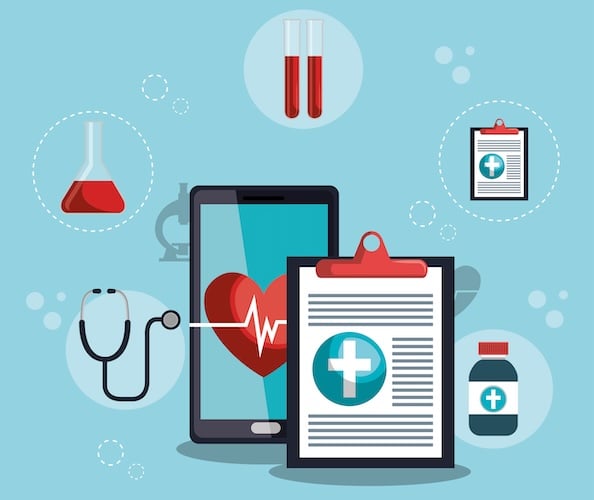
When discussing strategic approaches to EHR data migration, it’s imperative to consider the expertise behind such initiatives. Learn how healthcare app developer expertise contributes to seamless data migration and application development.
Navigating Through the Fog: Overcoming EHR Migration Challenges
When we talk about the medical data migration process from EHR to EHR, it’s akin to steering a ship through dense fog. The challenges are numerous, but with precision navigation, the fog clears to reveal a successful migration process that enhances healthcare delivery and efficiency. Here’s an expert guide to overcoming some of the most formidable challenges encountered during this critical phase.
Pre-Migration Planning
Before setting sail, it’s essential to work on a thorough EHR migration plan. This includes:
- Identifying Key Data: Determine what needs to be migrated. Not all data might need moving, and identifying the most critical pieces ensures a focused approach.
- Migration Scope and Timeline: Establishing clear objectives, scope, and a realistic timeline helps manage expectations and project milestones effectively.
Data Integrity and Accuracy
Maintaining the integrity and accuracy of data during the EHR data migration process is paramount. This includes:
- Data Cleansing: Identifying and correcting inaccuracies before migration. Think of it as purifying your water before setting off on a long voyage.
- Consistent Data Formatting: Standardizing data formats prior to migration to prevent compatibility issues down the line.
Dealing with Data Inconsistencies and Duplication
Unnecessary duplications and inconsistencies can weigh down your migration efforts like unnecessary cargo. Strategies include:
- Implementing De-duplication Tools: Use advanced tools to identify and eliminate duplicates.
- Regular Audits: Conduct audits to find inconsistencies, much like checking your compass and maps regularly.
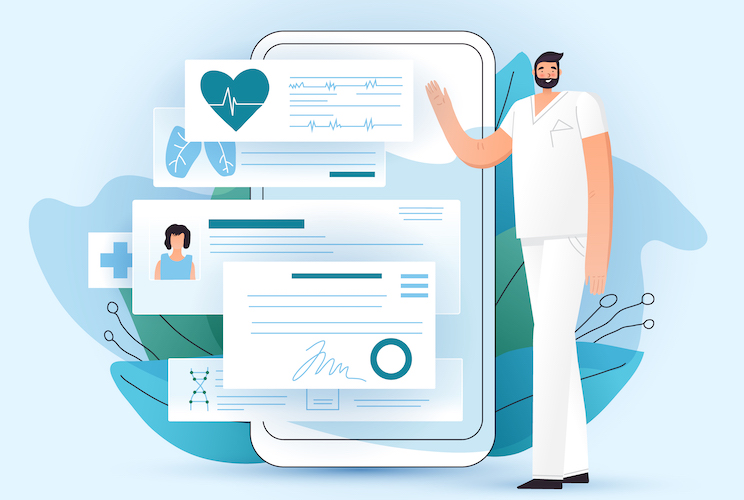
Minimizing Downtime
Minimizing operational disruption is crucial. Techniques include:
- Phased Migration Approach: Implementing the migration in phases can significantly reduce downtime, ensuring that some parts of the system are always operational.
- Testing in Stages: Testing parts of the migration process individually can help identify issues without affecting the entire system.
Ensuring Compliance
With healthcare data, compliance with regulations such as HIPAA is non-negotiable. This involves:
- Regular Compliance Checks: Throughout the migration process, conduct checks to ensure all data handling meets regulatory standards.
- Secure Data Handling Practices: Implement and adhere to secure data handling practices to protect patient information.
Interoperability and Data Formatting Issues
The ability of different systems to work together seamlessly is critical. Addressing interoperability involves:
- Adopting Standards: Use industry-standard data formats and protocols to ensure smooth interoperability.
- Collaboration Tools: Utilize tools and platforms that enhance communication between different systems and software.
Also Read: EHR Interoperability Breakdown
Legacy System Complexities
Older systems can pose unique challenges due to outdated technologies. Overcoming these requires:
- Expert Analysis: Bringing in experts who understand older systems can provide insights into the best ways to handle legacy data.
- Custom Solutions: Sometimes, custom solutions may be necessary to bridge the gap between old and new systems.
Understanding EHR Data Structures and Standards
A deep understanding of the data structures and standards used in EHR systems is critical. It involves:
- Continuous Education: Keeping up with evolving standards and structures through continuous learning and adaptation.
- Expert Consultation: Consulting with EHR system experts can provide valuable insights into handling complex data structures.
Related: Integrate your medical app with EHR
Managing User Adoption and Training Challenges
Ensuring that the end-users can smoothly transition to the new system is crucial for success. Strategies include:
- Comprehensive Training Programs: Developing training programs tailored to different user groups ensures everyone is prepared.
- Ongoing Support: Providing ongoing support post-migration helps address any issues quickly and keeps the system running smoothly.
Real-world examples highlight that tackling these challenges head-on with meticulous planning, expert insights, and strategic execution leads to a successful EHR migration process. By addressing each of these areas meticulously, healthcare organizations can ensure a smoother EHR transition, ultimately contributing to more efficient operations and enhanced patient care.
Unlocking Success: Best Practices for a Smooth EHR Data Migration
In the realm of healthcare technology, specifically within the intricate process of EHR and EMR data migration, ensuring a seamless transition is paramount. But how can health app founders and clinical executives ensure success in this critical endeavor? Here, we unfold the EMR data migration best practices that not only showcase Topflight’s expertise but also serve as a guide to mastering the migration process.
Comprehensive Planning and Project Management
As you already know, a complete EHR migration plan is a must for successful EMR data migration.
- Define Clear Objectives: Before anything else, know what you’re aiming for. Why are you migrating data to another system? What outcomes are expected?
- Allocate Resources Wisely: Ensure you have the right mix of skills within your team and allocate enough time and budget to match the project’s scale.
- Risk Assessment: Identify potential risks and prepare mitigation strategies. Remember, forewarned is forearmed.
Medical Info Audit and Cleanup
- Data Quality Assessment: Perform an initial audit to assess the quality of the data. Is it accurate, complete, and up-to-date?
- Cleanup Process: Clean, de-duplicate, and correct data before migration. This step is crucial for minimizing issues down the line.
Data Mapping and Validation
- Establish Mapping Rules: How will data from the old system correspond to the new one? Setting clear mapping rules is vital.
- Validation: Post-migration, validate the data to ensure it has been accurately transferred and transformed according to the predefined rules.
Stakeholder Engagement
- Communication Plan: Keep all stakeholders informed throughout the process. Regular updates build trust and ensure alignment.
- Solicit Feedback: Engage end-users early and often to understand their needs and concerns, making them feel part of the migration process.
Testing Phases
- Pilot Testing: Conduct a smaller-scale migration test to identify potential problems without risking the entire dataset.
- Incremental Testing: Test in phases, starting with non-critical data, to monitor system performance and make adjustments as needed.
Post-Migration Support
- Data Reconciliation and Verification: After migration, reconcile and verify data to ensure completeness and accuracy.
- Monitoring System Performance: Continuous monitoring helps in quickly identifying and resolving any issues that arise.
- User Satisfaction: Gather feedback from end-users to gauge satisfaction and identify areas for improvement.
Establishing a Robust Data Governance Framework
- Policies and Procedures: Develop clear policies and procedures for data management and governance in the new system.
- Data Security and Privacy: Ensure that all migrated data complies with legal and regulatory requirements, such as HIPAA, in the US.
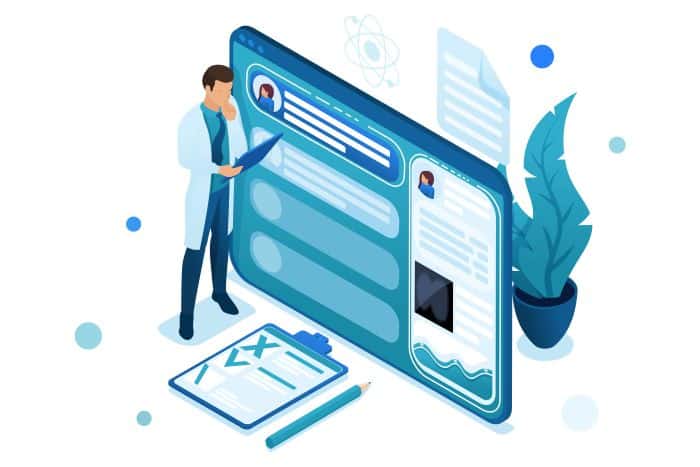
Data Migration Automation and Tooling
- Leverage Technology: Use specialized tools and software for data migration to increase efficiency and reduce manual errors.
- Custom Solutions: Sometimes, off-the-shelf tools won’t fit your specific needs. Don’t shy away from developing custom solutions if necessary.
Effective Communication and Stakeholder Management
- Engage Regularly: Keep the lines of communication open with all parties involved. Regular meetings and updates go a long way.
- Manage Expectations: Be clear about what can (and cannot) be achieved within the given timeframe and budget.
By adhering to these EHR data migration best practices, healthcare organizations can ensure a smoother transition to their new systems. The goal is not just to migrate data but to enhance overall operational efficiency, improve patient care, and ensure data integrity throughout the process.
With Topflight as your strategic partner, navigating the complexities of EMR data migration services becomes a well-orchestrated endeavor, unlocking new possibilities in healthcare delivery and management.
Advanced Insights: Not-So-Obvious Factors in EHR Data Migration
When we talk about EHR database migration, it’s easy to get caught up in the technicalities and forget that there are layers to this process not immediately apparent to everyone. While the heavy lifting of data might conjure images of ones and zeros moving from point A to B, the reality involves much more nuanced considerations. Here, we uncover some facets that may not stand out at first glance but are crucial for a successful transition.
Handling Unstructured Data
Did you know that a significant portion of valuable patient information resides in unstructured data? We’re talking about notes, emails, images, and even voice recordings. Unlike structured data, which fits neatly into predefined models, unstructured data is the wild card of data migration. Its heterogeneity presents unique challenges:
- Identification and Categorization: First off, identifying and categorizing this data is a Herculean task. It requires a keen eye and sophisticated tools to sift through the digital haystack.
- Extraction Techniques: Then comes the extraction. Techniques like Natural Language Processing (NLP) can be instrumental in parsing and structuring this data for migration.
Importance of Staff Training and Change Management
Ever noticed how a new system can bring even the most seasoned professionals to their knees? That’s because human adaptability is as critical as the technology itself. Here’s why focusing on your team is non-negotiable:
- Reducing Resistance: Change often meets resistance. Proper training demystifies the new system, making it less daunting for staff.
- Ensuring Continuity: Knowledgeable staff ensure that the migration doesn’t interrupt the daily rhythm of healthcare delivery. They’re the ones who’ll maintain continuity of care when the systems switch over.
Leveraging AI and Machine Learning for Data Cleanup
Picture this: AI algorithms scouring through your datasets, identifying inconsistencies, duplicates, and gaps faster than any human team could. It’s not science fiction; it’s what AI and machine learning bring to the table:
- Precision and Efficiency: These technologies can drastically improve the precision and efficiency of the data cleanup process.
- Predictive Analysis: Beyond cleanup, they offer predictive analysis to forecast potential migration pitfalls, enabling proactive measures.
Now, imagine the ease of transitioning your system to a new platform with these intelligent solutions at your side. Whether it’s moving data from one EHR system to another, collaborating with a third party for enhanced service delivery, or aiming to migrate existing data to a more robust environment, leveraging AI ensures that your transition is not just seamless but also smart.
Continuous Monitoring and Optimization Post-Migration
Think the job ends once the data is migrated? Think again. The real magic happens in the monitoring and fine-tuning that follows:
- Early Detection of Issues: Continuous monitoring helps in the early detection of any discrepancies or system bugs that could compromise data integrity or hinder user experience.
- Performance Optimization: Regular audits and performance checks ensure that the system not only runs smoothly but also continues to evolve and adapt to the changing needs of healthcare providers and their patients.
In essence, while the technical aspects of EHR database migration are undoubtedly important, these advanced insights highlight the broader, more complex landscape that needs navigating. It’s about looking beyond the immediate task of moving data and understanding the long-term implications, opportunities for improvement, and, most importantly, the human element in all of this.
Ensuring success in EHR data migration means paying attention to these not-so-obvious factors, making the invisible visible, and tackling the challenges head-on with innovative solutions and a comprehensive approach.
Delving into advanced insights on EHR data migration, the importance of a solid implementation strategy cannot be overstated. Our comprehensive look at EHR implementation offers further exploration into ensuring successful integration into healthcare systems.
The Human Factor: Training and Support During EHR Migrations
When venturing into the world of EHR migrations, it’s easy to get lost in a sea of data, software, and technology. But at the heart of every successful migration lies a crucial element that can often be overlooked: the human factor. Yes, we’re talking about the people behind the screens—the staff who will interact with this new EHR implementation daily. How do we ensure they’re not just prepared but also supported throughout this transformation?
Understanding the Impact on Staff
First off, it’s essential to acknowledge the impact that an EHR migration has on staff. It’s not just about learning a new system; it’s about changing their workflow, which can be daunting for many. Consider this:
- Routine Disruption: Daily workflows are disrupted, leading to initial productivity dips.
- Learning Curve: Every system has its quirks, and mastering them requires time and patience.
But fear not; these challenges are not insurmountable.
Effective Training Programs
Training is not just about showing how the new system works. It’s about integrating this knowledge seamlessly into the daily lives of those who use it. Here’s where to start:
- Tailored Training Sessions: One size does not fit all. Different departments use EHR systems differently, so their training should reflect that.
- Engaging Content: Use interactive modules, simulations, and real-life scenarios to make learning more engaging and effective.
Patients Are Also Part of the Process
Focusing on the patient experience during EHR migrations is crucial. After all, isn’t the ultimate goal of healthcare technology to enhance patient care and accessibility? When we talk about this kind of tech transformation, it’s not just about moving data or upgrading systems; it’s about ensuring continuity and even improving the healthcare experience for patients.
Consider this: What if patients hardly noticed an EHR migration because everything worked just as smoothly, if not better, than before? This best-case scenario is not only desirable but achievable with meticulous planning and communication. Here’s how you can make it happen:
- Seamless Access: Ensure that patients have uninterrupted access to their medical records during and after the migration. Any changes in how they access their records should be communicated well in advance.
- Clear Instructions: If the migration process results in any changes to the way patients interact with their EHR, such as a new portal or app interface, providing clear, easy-to-follow instructions is essential. Consider creating tutorial videos or step-by-step guides to help them adapt to the new system.
- Reassure Data Integrity: Patients need to know that their health records are safe, secure, and accurate throughout the migration process. Communicate openly about the measures taken to ensure data integrity and privacy.
- Feedback Channels: Offer patients a direct channel for feedback or concerns regarding the new system. Listening to their experiences can provide valuable insights for further improvements and shows that their satisfaction is a priority.
- Educate on Benefits: Highlight the benefits of the new EHR system to patients, whether it’s improved access to their health records, faster service, or more robust security measures. Letting patients know the ‘why’ behind the migration can foster a positive outlook.
Incorporating these strategies ensures not only a smooth transition from the backend but also maintains, if not enhances, the trust and satisfaction of the patients, who are, after all, the most critical stakeholders in the healthcare ecosystem.
Continuous Support
The end of training sessions should not mark the end of support. Continuous support mechanisms can significantly ease the transition:
- Help Desks: A dedicated team to address queries and problems can be a lifesaver during the first few weeks post-migration.
- Feedback Loops: Encourage staff to share their experiences and suggestions. This feedback is invaluable for fine-tuning the system and the training programs.
Fostering a Culture of Adaptability
Finally, creating an environment that embraces change is perhaps the most critical step. Here’s how:
- Positive Reinforcement: Celebrate milestones and successes, no matter how small. Positive reinforcement goes a long way in building confidence.
- Open Communication: Keep lines of communication open. Address fears and concerns openly and involve everyone in the migration process.
As you can see, EHR migrations aren’t just technical projects; they are profoundly human endeavors. They require careful planning, empathy, and continuous support to succeed. By focusing on the human factor, healthcare organizations can not only ensure a smoother transition but also leverage the full potential of their new EHR systems to improve patient care and operational efficiency. At Topflight, we understand that technology serves people, and our approach to EHR integration reflects this philosophy.
The human factor in EHR migrations is paramount for success. For teams looking to extend their impact within the healthcare sector, our guide on how to build a healthcare app provides a step-by-step framework that prioritizes user needs and operational readiness.
Mitigating Risks and Ensuring Regulatory Compliance
In the world of health app development, navigating the complex landscape of legal requirements and data protection standards is not just a necessity—it’s an art. When it comes to EHR data migration, understanding how to effectively mitigate risks while ensuring strict regulatory compliance is paramount. But how do you ensure that your migration process ticks all the boxes for security and complies with industry benchmarks like HIPAA and HL7?
Data Security and Privacy Considerations
First and foremost, the sanctity of patient data during migration cannot be overstated. Here are several strategies to fortify data security and safeguard privacy:
- Encryption: All data, both at rest and in transit, should be encrypted using robust algorithms. It’s like putting your data in a vault that only the right key can open.
- Access Controls: Implement stringent access controls to ensure that only authorized personnel can access sensitive information. Think of it as having bouncers at the door of your data party, only letting in those on the guest list.
- Regular Audits: Conduct regular security audits to identify and rectify potential vulnerabilities. It’s akin to regularly checking the integrity of your ship’s hull before setting sail.
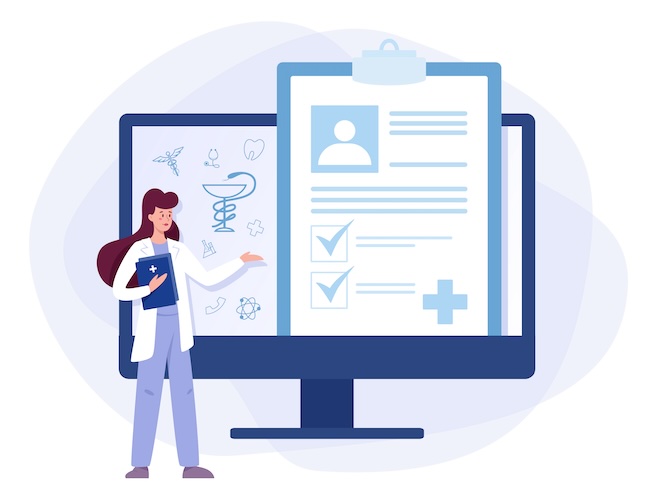
Compliance with Industry Standards and Regulations
Staying abreast of and adhering to regulations such as HIPAA in the U.S. or GDPR in Europe is non-negotiable. Here’s how:
- HIPAA Compliance: Ensure all aspects of the migration process comply with the Health Insurance Portability and Accountability Act, focusing on the Privacy and Security Rules. It’s like following a recipe to the letter to ensure your dish turns out perfect.
- Adhering to HL7 Standards: Leverage Health Level 7 (HL7) standards for the exchange, integration, sharing, and retrieval of electronic health information. These standards act as a common language, allowing diverse systems to communicate fluently.
Contingency Planning and Disaster Recovery Strategies
Even the best-laid plans can encounter turbulent waters. This is where contingency planning and disaster recovery come into play:
- Develop a Comprehensive Contingency Plan: Outline steps to take in the event of data loss, breaches, or other unforeseen complications. It’s like having a detailed map and compass in case you get lost in the wilderness.
- Robust Backup Systems: Maintain up-to-date backups of all data being migrated. Should anything go amiss, you’ll have a safety net to fall back on.
- Disaster Recovery Protocols: Establish clear protocols for disaster recovery, ensuring quick restoration of data and services with minimal downtime. Imagine it as a well-rehearsed emergency drill, where everyone knows exactly what to do when alarms sound.
While the technicalities of EHR data migration are undoubtedly complex, weaving through the tapestry of risk mitigation and regulatory compliance requires its own dedicated focus. By encrypting data, enforcing access controls, adhering to industry standards, and preparing for worst-case scenarios, you not only protect your organization but also uphold the trust of the patients who depend on you.
How Topflight Makes the Difference in EHR Data Migration
Our unique blend of expertise, proprietary methodologies, and a dedicated team of EHR integration specialists sets us apart, ensuring your data migration endeavor is not just successful but exemplary.
Proven Track Record and Industry Experience
Topflight isn’t just another player in the healthcare app development arena; we’re leaders with a proven track record that speaks volumes. Our extensive experience, particularly in EHR integration, positions us uniquely to handle the complexities and challenges of data migration. From the Virtual Clinic app for an Orange County hospital, showcasing our ability to implement practical, patient-centered solutions, to GaleAI, where we leveraged AI for medical coding, our projects demonstrate a deep understanding of healthcare’s nuanced needs.
Proprietary Methodologies and Best Practices
Our approach to EHR data migration is built on proprietary methodologies developed through years of hands-on experience. We don’t just follow best practices; we set them. Our strategies encompass:
- In-depth implementation guidance ensuring a seamless transition and HIPAA compliance.
- Agile development techniques tailored to the dynamic healthcare landscape.
- Comprehensive workflow validation to enhance clinical operations post-migration.
- Inhouse ML/AI expertise for custom automations.
Dedicated Team of EHR Integration Specialists
At the very heart of Topflight’s unparalleled success is our team of dedicated specialists, who are not just familiar with leading EHR platforms like Epic, Cerner, and Allscripts—they’re intimately entwined with them.
Each member brings a wealth of knowledge and a passion for healthcare technology, from integration experts knowledgeable in SMART on FHIR capabilities to project managers skilled in navigating the regulatory environment of healthcare. This collective expertise ensures that we’re not just executing tasks; we’re solving problems on the path to future advancements in healthcare technology.
Case Study: Successful EHR Data Migration Projects
Our portfolio of successful projects serves as a testament to our capabilities and visionary approach. Here are highlights from our case studies:
- Virtual Clinic App for OC Hospital: This project exemplified our modular approach to EHR integration, enabling patients to receive care remotely without sacrificing the quality or security of their data. The seamless integration ensured clinicians had real-time access to patient records, improving both decision-making and patient outcomes.
- GaleAI: By integrating AI-powered medical coding into EHR systems, GaleAI not only streamlined the billing process but also minimized errors. This project underscored our commitment to leveraging advanced technologies to solve real-world healthcare problems.
- RTHM and Dedica Health: These projects focused on remote care and patient monitoring, respectively, demonstrating our expertise in connecting devices and utilizing real-time sensor data to improve patient adherence and overall care.
Through these diverse yet uniformly successful projects, Topflight showcases not just our technical prowess but our unwavering commitment to enhancing healthcare delivery. Our blend of innovative solutions, proven methodologies, and dedicated specialists ensures that we’re not just a service provider but a partner in your healthcare app’s success. Reach out if you need help with an EHR data migration project.
Data migration in EHR involves transferring patient records and other healthcare information from one electronic health record system to another. It’s like moving houses but for healthcare data, ensuring no valuable information gets lost in transit. Data conversion in EHR is the process of changing healthcare data from one format to another to ensure compatibility with the new EHR system. Imagine translating a book into a language that more readers understand, making the information accessible to a wider audience. Consider starting the migration when your current EHR doesn’t meet operational needs or regulatory requirements or when you’re aiming to enhance efficiency and patient care. It’s like upgrading to a better smartphone when the old one can’t keep up anymore. Requirements include compatibility between systems, data integrity, privacy compliance (like HIPAA), and minimal operational disruption. Think of it as the checklist you’d follow for a successful space mission—everything needs to be precise and secure. Yes, outsourcing to specialists who have the expertise and tools for a seamless transition is often a wise choice. It’s akin to hiring a professional mover who knows how to handle your precious items with care.Frequently Asked Questions
What is data migration in EHR?
What is data conversion in EHR?
When to initiate the data migration process from one EHR to another?
What are EHR requirements for data migration?
Can health data migration to EHR be outsourced?